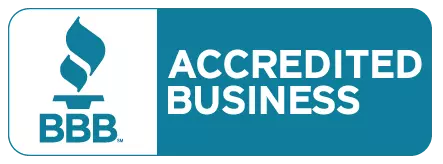In today’s digital landscape, Search Engine Optimization (SEO) is crucial for any business or website that wants to succeed online. Whether you’re a beginner or a seasoned marketer, understanding the fundamentals and the evolving nature of SEO is key to increasing your visibility, driving traffic, and boosting conversions.
What is SEO?
SEO stands for Search Engine Optimization, the process of optimizing your website to improve its ranking on search engine results pages (SERPs) like Google, Bing, and Yahoo. The goal is to increase the organic (unpaid) traffic coming to your website, improving both quantity and quality of visitors.
Why is SEO Important?
Search engines are the primary way users navigate the web. When people need information, a service, or a product, they turn to Google and other search engines. The higher your website ranks in search engine results, the more likely users are to click on your link, visit your site, and convert into customers.
Benefits of SEO:
- Increased Visibility: Appearing higher on search results means more visibility.
- More Organic Traffic: SEO drives targeted traffic, which is essential for lead generation and sales.
- Builds Credibility and Trust: Ranking at the top makes your brand appear more credible and authoritative.
- Cost-Effective: Unlike paid ads, organic traffic is free and sustainable in the long term.
Core Components of SEO
- On-Page SEO
On-page SEO involves optimizing the content and structure of individual pages to improve ranking. This includes:- Keyword Research: Discovering and targeting the right keywords your audience is searching for.
- Title Tags and Meta Descriptions: Writing compelling title tags and meta descriptions to improve click-through rates (CTR).
- Headings (H1, H2, H3): Structuring your content using proper headings for better readability and SEO.
- URL Structure: Optimizing URLs to be short, descriptive, and keyword-rich.
- Internal Linking: Linking to other relevant pages within your site to improve navigation and search engine indexing.
- Content Optimization: High-quality, engaging, and valuable content that answers user queries and includes relevant keywords.
- Image Optimization: Using alt tags for images to make them searchable by Google’s image search.
- Off-Page SEO
Off-page SEO focuses on building your site’s reputation through external signals. The most crucial aspect of off-page SEO is backlinks:- Backlink Building: Gaining links from authoritative and relevant websites that point back to your site. This signals to search engines that your content is valuable and trusted.
- Social Media Engagement: Sharing your content on social media platforms helps drive traffic and can improve SEO indirectly.
- Guest Blogging: Writing content for other reputable websites with a link back to your site.
- Technical SEO
Technical SEO focuses on optimizing the technical aspects of your website to ensure search engines can crawl, index, and rank it efficiently. Some of the most critical factors include:- Site Speed: A fast-loading site provides a better user experience and is a ranking factor for search engines.
- Mobile-Friendliness: Ensuring your site is responsive and works well on all devices, as mobile-first indexing is the norm for Google.
- XML Sitemap: Creating and submitting an XML sitemap helps search engines understand your site structure.
- Robots.txt: This file tells search engines which pages they can or cannot index.
- HTTPS: Using a secure site (HTTPS) is essential for building trust with users and search engines.
- Content Marketing and SEO
Content and SEO go hand in hand. By consistently producing high-quality content, you can naturally attract backlinks, build authority, and improve search rankings. Here are key strategies to align content with SEO:- Content that Solves Problems: Write in-depth, insightful content that addresses common user questions.
- Long-Form Content: Google favors long, comprehensive articles (1,500+ words) that offer value to readers.
- Regular Updates: Search engines prioritize fresh, updated content, so updating old posts can boost your rankings.
- Local SEO
Local SEO is essential for businesses that operate in specific geographic locations. Optimizing your website for local search results can drive highly targeted traffic from people nearby looking for your services.- Google My Business: Creating and optimizing your Google My Business profile is key to appearing in local searches and Google Maps.
- NAP Consistency: Ensure your Name, Address, and Phone Number (NAP) are consistent across your website and all online directories.
- Local Citations and Reviews: Earning reviews and listings on local directories and review sites helps with local SEO.
SEO Trends to Watch in 2024
SEO is always evolving, and staying ahead of trends can give you a competitive edge. Some key trends for 2024 include:
- AI-Powered SEO: Artificial Intelligence (AI) and machine learning are becoming more integrated into search algorithms. Understanding how to optimize for AI-powered search engines like Google’s RankBrain is crucial.
- Voice Search Optimization: As voice search becomes more popular, optimizing for conversational queries (e.g., “best seafood restaurant near me”) will be vital.
- Core Web Vitals: Google’s Core Web Vitals, which measure user experience aspects like loading speed, interactivity, and visual stability, will play a major role in rankings.
- Video SEO: With the rise of video content, optimizing videos for search engines by using appropriate tags, descriptions, and transcripts is increasingly important.
Common SEO Mistakes to Avoid
While SEO can deliver great results, many businesses fall into common traps that can harm their rankings. Here are a few SEO mistakes to avoid:
- Keyword Stuffing: Overloading your content with keywords can harm user experience and hurt your rankings.
- Ignoring Mobile Optimization: Not optimizing your site for mobile can result in lower rankings, as search engines prioritize mobile-first indexing.
- Duplicate Content: Copying content from other pages or sites can result in penalties from search engines.
- Not Monitoring SEO Performance: Regularly analyzing your SEO performance using tools like Google Analytics or Google Search Console is essential for ongoing improvements.
SEO Tools to Help You Get Started
There are several tools available to help you with SEO, from keyword research to tracking your rankings. Some popular ones include:
- Google Analytics: For tracking traffic, conversions, and user behavior.
- Google Search Console: To monitor how Google indexes and ranks your site.
- Ahrefs: A robust tool for keyword research, backlink analysis, and competitive research.
- SEMrush: Another all-in-one tool for SEO and digital marketing strategies.
- Moz: Great for beginners with tools for keyword research, SEO audits, and link building.
Here are some of the top SEO-related questions and answers commonly asked on Google:
1. What is SEO and how does it work?
Answer: SEO, or Search Engine Optimization, is the practice of improving a website’s visibility on search engine result pages (SERPs). It works by optimizing content, structure, and backlinks to rank higher in search engines like Google, Bing, or Yahoo. SEO involves both on-page optimization (keywords, content) and off-page strategies (backlinks).
2. Why is SEO important for businesses?
Answer: SEO helps businesses attract organic traffic, increasing visibility without paid ads. It drives relevant traffic to a website, improves credibility, and enhances user experience, leading to higher conversion rates. SEO is essential for long-term growth and staying competitive online.
3. What are the different types of SEO?
Answer: The main types of SEO include:
- On-Page SEO: Optimizing individual pages with keywords, meta tags, and internal links.
- Off-Page SEO: Building backlinks from external sites to improve domain authority.
- Technical SEO: Enhancing website infrastructure, like site speed and mobile-friendliness.
- Local SEO: Focusing on optimization for a specific geographic area to attract local customers.
4. How long does it take for SEO to show results?
Answer: SEO is a long-term strategy and can take anywhere from 3 to 6 months to start seeing noticeable results. However, the exact time depends on the competition, keyword difficulty, and how well the website is optimized.
5. What are keywords in SEO?
Answer: Keywords are the terms and phrases that users type into search engines to find information. In SEO, selecting and optimizing for the right keywords helps search engines understand the content of your page and match it with user queries, improving rankings.
6. How do backlinks help SEO?
Answer: Backlinks, or inbound links, are links from other websites that point to your site. They signal to search engines that your site is credible and authoritative. The more quality backlinks you have from reputable sites, the higher your site can rank.
7. What are the best tools for SEO?
Answer: Some of the most popular tools for SEO include:
- Google Analytics: Tracks website traffic and user behavior.
- Google Search Console: Monitors site performance in search results.
- Ahrefs: An all-in-one SEO tool for keyword research, backlinks, and competitor analysis.
- SEMrush: Provides keyword data, site audits, and tracking.
- Moz: Offers SEO tools and resources for beginners and experts.
8. What are meta tags and why are they important in SEO?
Answer: Meta tags are HTML tags that provide information about a web page to search engines and users. The most important ones for SEO are the meta title and meta description. Meta tags help search engines understand the content of a page, influencing rankings and click-through rates.
9. How does mobile optimization affect SEO?
Answer: Mobile optimization is critical for SEO since Google uses mobile-first indexing, meaning it primarily evaluates the mobile version of a website for ranking. A mobile-optimized site ensures that it loads fast, is easy to navigate, and provides a great user experience on mobile devices.
10. What is a sitemap and why is it important for SEO?
Answer: A sitemap is a file that lists all the pages on a website, helping search engines like Google to crawl and index the site’s content. Submitting a sitemap improves search engines’ ability to discover and rank your pages efficiently.




